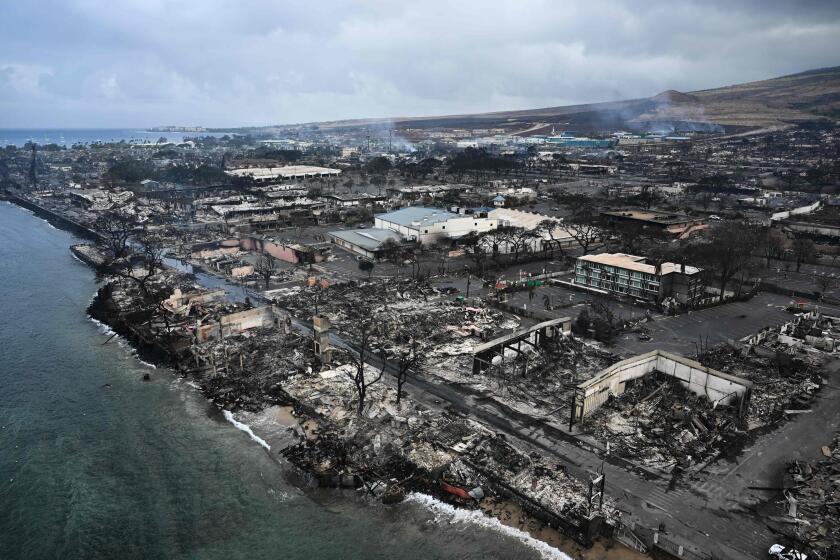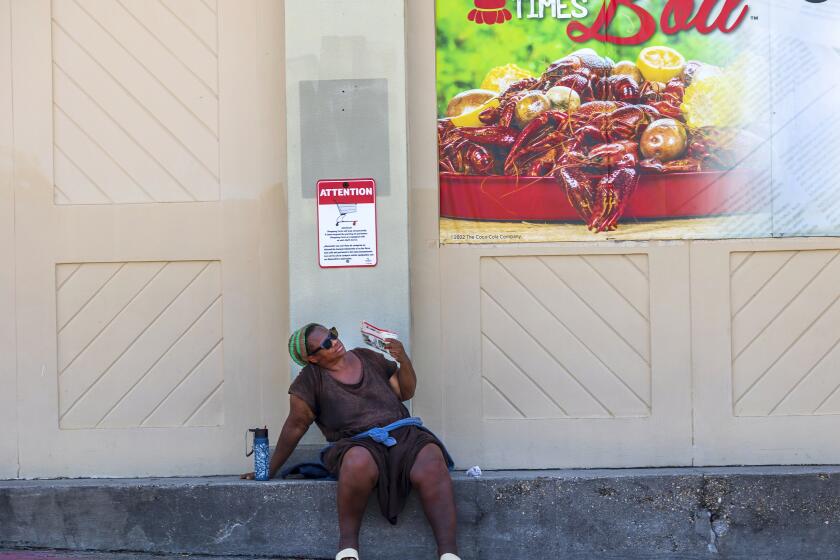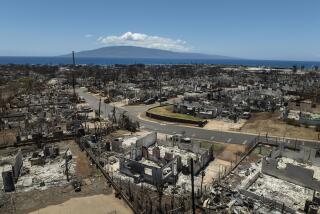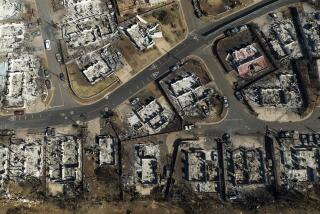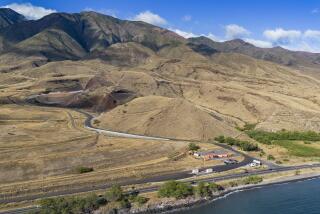âGone foreverâ: Fire devastates historic Lahaina, former capital of the Hawaiian kingdom
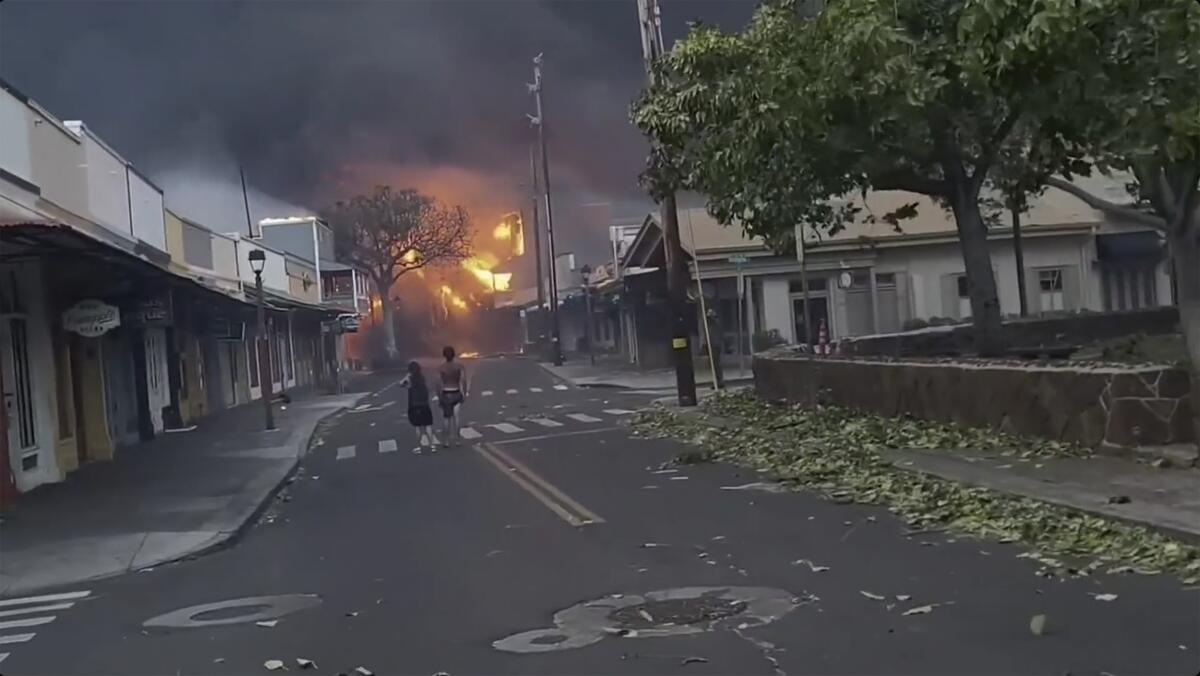
KAHULUI, Hawaii â Dissipating smoke and ash revealed the sheer devastation that a wildfire left behind in Lahaina Town, one of Hawaiiâs most historic cities and onetime capital of the former kingdom.
At least 36 people were killed and hundreds of structures were damaged or destroyed in the blaze that erupted Tuesday and quickly spread throughout the western Maui community of fewer than 13,000 residents.
Itâs feared that the fire consumed much of historic Front Street, home to restaurants, bars, stores and what is believed to be the United Statesâ largest banyan â a fig tree with roots that grow out of branches and eventually reach the soil, becoming trunk-like features that expand the size of the tree. Other parts of Lahaina are also feared destroyed.
Richard Olsten, a helicopter pilot with tour operator Air Maui, said he and other pilots and mechanics flew over the scene Wednesday before work to take stock.
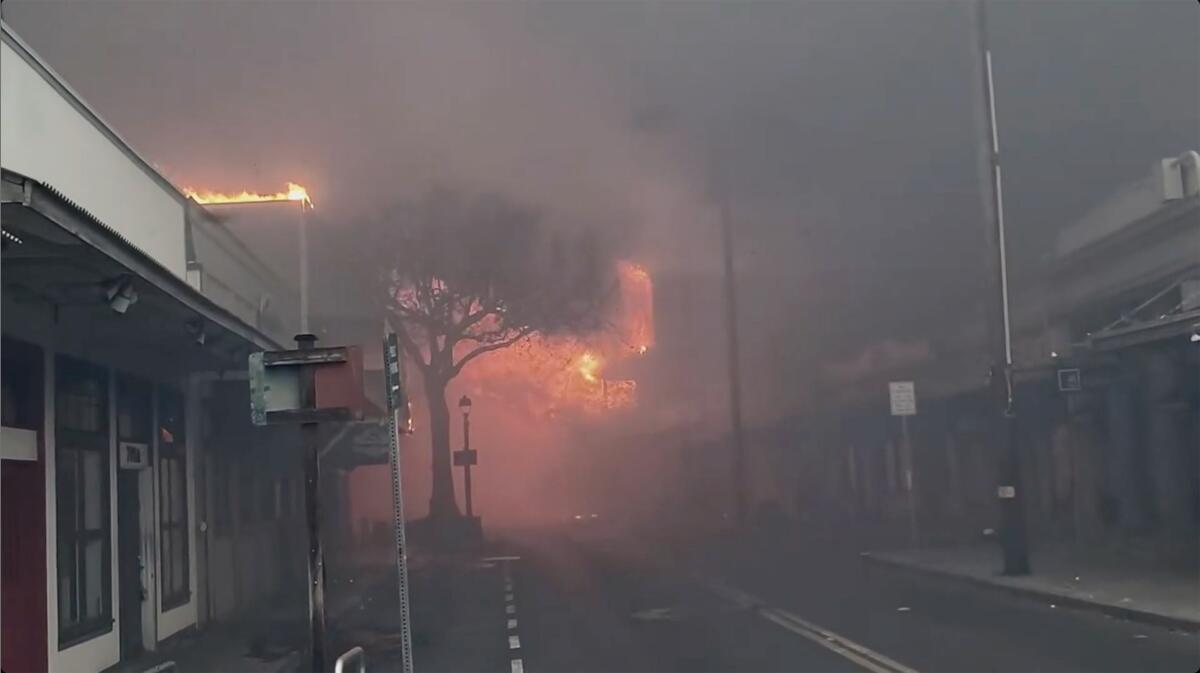
âAll the places that are tourist areas, that are Hawaiian history, are gone, and that canât be replaced. You canât refurbish a building thatâs just ashes now. It canât be rebuilt â itâs gone forever,â he said.
âItâs a huge impact and blow on the history of Hawaii and Maui and Lahaina,â Olsten said.
Fires across Maui have destroyed buildings and lead to at least six deaths. Photos from space show the scale of the destruction.
For Francine Hollinger, a 66-year-old Native Hawaiian, the news was painful since Front Street represented history.
âItâs like losing a family member ⌠because theyâll never be able to rebuild it, like we wouldnât be able to bring back our mother or father,â she said.
The full extent of loss wonât be known until officials can assess the damage done by the flames, which were fanned by winds caused in part by Hurricane Dora moving westward hundreds of miles to the south of the island state.
The Lahaina Historic District includes the downtown, Front Street and neighboring areas, and is home to more than 60 historic sites, according to the Advisory Council on Historic Preservation.
A National Historic Landmark since 1962, it encompasses more than 16,000 acres and covers ocean waters stretching a mile offshore from the storied buildings.
One of them is the 200-year-old, two-story stone Wainee Church, later renamed Waiola, which has Hawaiian kings and queens buried in its graveyard. Its hall, which can seat up to 200 people, was photographed apparently engulfed in flames this week.
After Kamehameha unified Hawaii under a single kingdom by defeating the other islandsâ chiefs, he made Lahaina his royal residence. His successors made it the capital from 1820 to 1845, according to the National Park Service.
âIt was really the political center for Hawaii,â said Davianna McGregor, a retired professor of ethnic studies at the University of Hawaii at Manoa.
Floods, fires, extreme heat, awful air quality, warming seas: As extreme weather engulfs the nation, the United States resembles a disaster movie set.
Lahainaluna High School was where royalty and chiefs were educated, and also where King Kamehameha III and his Council of Chiefs drafted the first Declaration of Rights of the People and the Constitution for the Hawaiian Kingdom.
âSo in that transition, from going from an absolute monarchy to a constitutional monarchy, the ruling chiefs in and around Lahaina and those educated at Lahainaluna played very prominent roles in our governance at that time,â McGregor said.
The capital was moved to Honolulu in 1845, but Lahainaâs palace remained a place where royalty would visit.
Lahaina also has a rich history of whaling, with more than 400 ships a year visiting for weeks at a time in the 1850s. Crew members sometimes clashed with missionaries on the island.
Breaking News
Get breaking news, investigations, analysis and more signature journalism from the Los Angeles Times in your inbox.
You may occasionally receive promotional content from the Los Angeles Times.
Sugar plantations and fishing boosted the economy over the decades, but tourism is the main driver now. Nearly 3 million visitors came to Maui last year, and many of them come to the historic city.
The fire is âjust going to change everything,â said Lee Imada, who worked at the Maui News for 39 years, including the last eight as managing editor, until his retirement in 2020. âItâs just hard to register, even right now, what the full impact of this is going to be.â
Imada lives in Waikapu, on Maui, but has ancestral ties to Lahaina going back generations. His motherâs family owned a chain of popular general stores, and his great-uncles ran the location on Front Street until it closed around 60 years ago.
âIf you went there, you could still see the name etched in the cement,â Imada said.
He recalled walking down Front Street among the tourists as they shopped or ate, looking at the banyan tree, and enjoying the beautiful ocean views from the harbor.
âItâs just sort of hard to believe that itâs not there,â Imada said. âEverything that I remember the place to be is not there anymore.â
More to Read
Sign up for Essential California
The most important California stories and recommendations in your inbox every morning.
You may occasionally receive promotional content from the Los Angeles Times.
